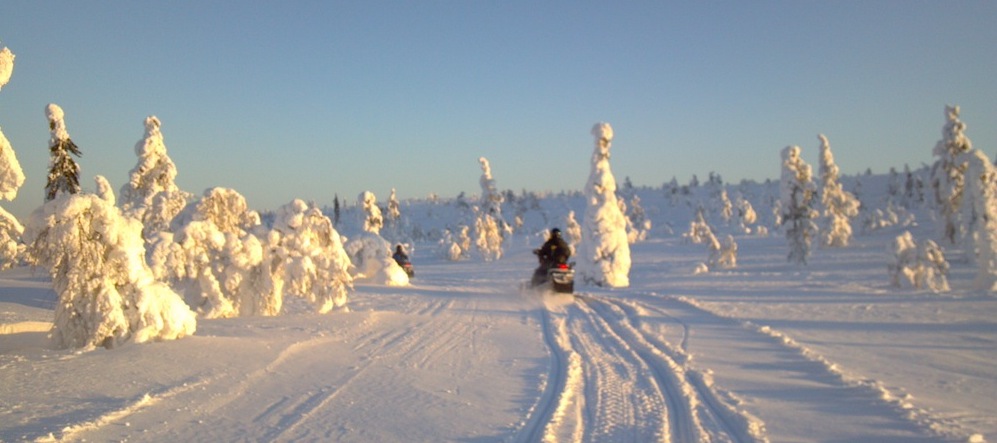About Snow |
 |
Snow is precipitation in the form of ice crystals, originating in clouds where air temperatures are below freezing (0˚C, 32˚F), and generally where ground temperatures are less than 5˚C (41˚F). Snow can fall in a few different forms, including snowflakes, graupel, and sleet. See also About Solid Precipitation. Snowflakes are clusters of ice crystals, generally less than 0.5 inches in diameter, that fall from clouds.
Once fallen, snow can be classified by type and formation. Firn, slush, cornice, and sastrugi are a few common examples. Firn, sometimes referred to as névé, is snow that has a high density — greater than 550 kilograms per cubic meter — and has existed for more than a year. Slush referrers to fallen snow that has mixed with water, and can be on land or on water, where it floats on the water as a viscous mass. Sastrugi and cornices are snow formations that are common where there are strong winds. Both are the result of blowing snow, with a cornice being an overhanging accumulation of wind-blown snow and ice (usually found on a ridge or cliff face) and sastrugi being sharp, irregularly formed ridges formed on a snow surface, parallel with wind direction, that can grow to many meters long and as much as a meter high.
Terrestrial snow has the largest geographic extent of the cryosphere components. It covers nearly 50 million km2 of the Northern Hemisphere in winter, affecting heavily populated mid-latitude regions as well as higher latitudes. Snow is a crosscutting component of the cryosphere that influences surface water and energy fluxes, atmospheric dynamics and weather, frozen ground and permafrost, biogeochemical fluxes, and ecosystem dynamics. The high albedo of snow reduces solar energy inputs and promotes lower surface temperatures. The low thermal conductivity of snow allows it to insulate the land surface from large energy losses in winter and reduce the severity of soil frost. Snow smooths the land surface, reducing wind resistance and modifying energy exchanges with the atmosphere. These interactions and the large latent heat of fusion strongly influence the land surface energy budget, with local and regional effects on atmospheric circulation that are now known to propagate globally.
The high sensitivity of snow to changes in temperature and precipitation makes it a primary indicator of climate change and implicates it in climate change hypotheses concerning redistribution and acceleration of the water cycle.




